Original air date: 19 November 2017

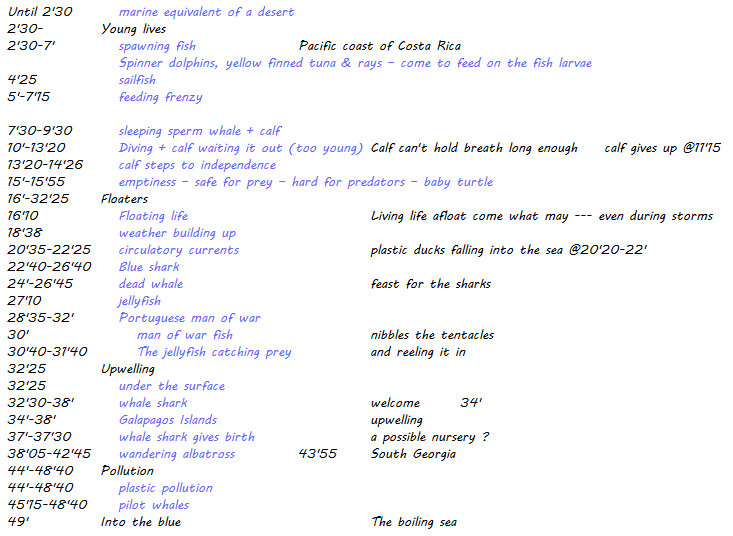
Below is an experimental view of the above. Since the blue colour is reserved for web links it is out of the question and was replaced with green which is used for three different purposes in the listing: for Theme, contents column it is used to mark the contents (usually a short for the detailed description in the right column). It can also be used in the right column as a connecting text between two different – otherwise seemingly inconsistent – stories. Lastly it can be used to indicate filming location.
| Start time | Theme, Contents | More detailed description (Filming location) |
|---|---|---|
| Until 2’30 | Marine equivalent of a desert | Earth’s greatest wilderness, covering more than half the planet. There’s nowhere to hide and little to eat: the marine equivalent of a desert. |
| 2’30-7′ | Young lives | Then there is an explosion: some shoal of tiny fish coming to the surface to spawn|
| 2’30 | Spawning fish | Lantern fish – Usually only come to the surface at night to feed on plankton but this time they do so to spawn (Pacific coast of Costa Rica) |
| 3’20 | Bonanza | Spinner dolphins, yellow finned tuna & rays – come to feed on the fish larvae — the sea seems to boil |
| 4’25 | Sailfish | |
| 5-7’15 | Feeding frenzy | |
| 7’30-9’30 | Sleeping sperm whale & calf | |
| 10′ | Diving + calf waiting it out (too young) | Calf can’t hold breath long enough – calf gives up (11’15) |
| 13’20-14’26 | Calf’s steps to independence | |
| 15′ | Emptiness | Safe for prey – hard for predators – A baby turtle drifts into the sea. Only recently has it become known where they spend their first years – in castaways at sea |
| 16′-32’25 | Floaters | |
| 16′ | Floating life | Living life afloat come what may — even during storms |
| 18’40 | Weather building up | |
| 20’35-22’25 | Circulatory currents | Plastic ducks falling into the sea (20’20-22′) from a container ship that falls victim to the weather – – leads to explain the complex currents. Not all the toys end up together !! |
| 22’40-26’40 | Blue shark | |
| 24′-26’45 | Dead whale | Feast for the sharks |
| 27’10 | Jellyfish | |
| 28’35-32 | Portuguese man of war | Fish nibbles the jellyfish’s tentacles (30′) |
| 30’40-31’40 | The jellyfish | Catching prey and reeling it in |
| 32’25 | Upwelling | |
| 32’25 | Under the surface | |
| 32’30-38′ | Whale shark | Welcome (34′) |
| 34′-38′ | Galapagos | Upwelling |
| 37′-37’30 | Whale shark gives birth | A possible nursery? |
| 38′-42’45 | Wandering albatross | Biggest bird, wingspan 3.5 metres. The entire world population 16 thousand birds nest on this island and a few other smaller ones in the Southern Ocean — (South Georgia) (43’55) |
| 44′-48’40 | Pollution | |
| 44′-48’40 | Plastic pollution | A plastic bag, a turtle entangled in plastic (45′) |
| 45’15-48’40 | Pilot whales | Its role in building up of pollutants among whales and other creatures, a mother grieving its newborn dead calf (46′-47’30) |
| 49′ | Into the blue | The boiling sea: The lantern fish rising to the surface at night to spawn – – feeding frenzy |
Selected material
Marine desert
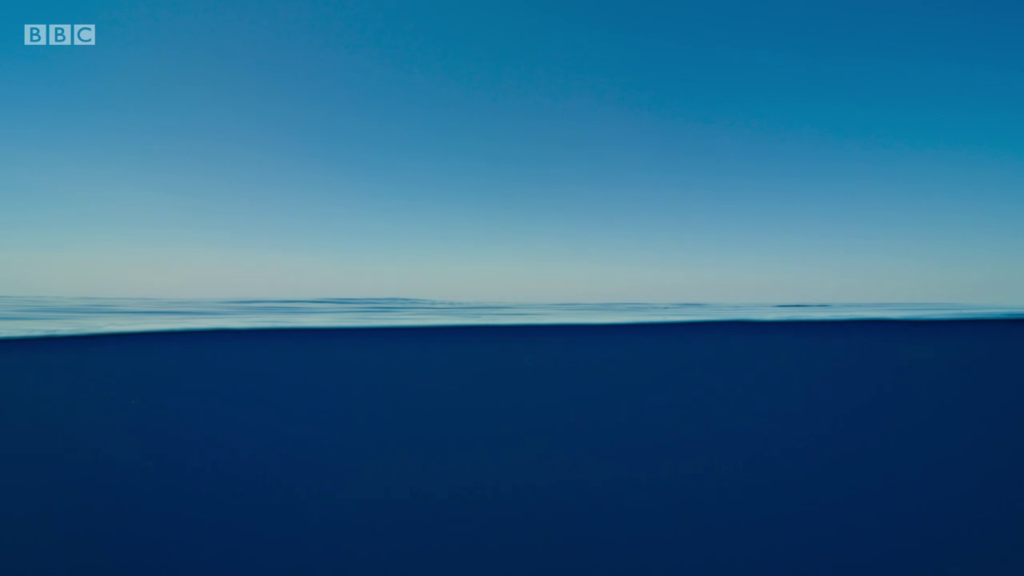
Whales sleeping, or at least napping
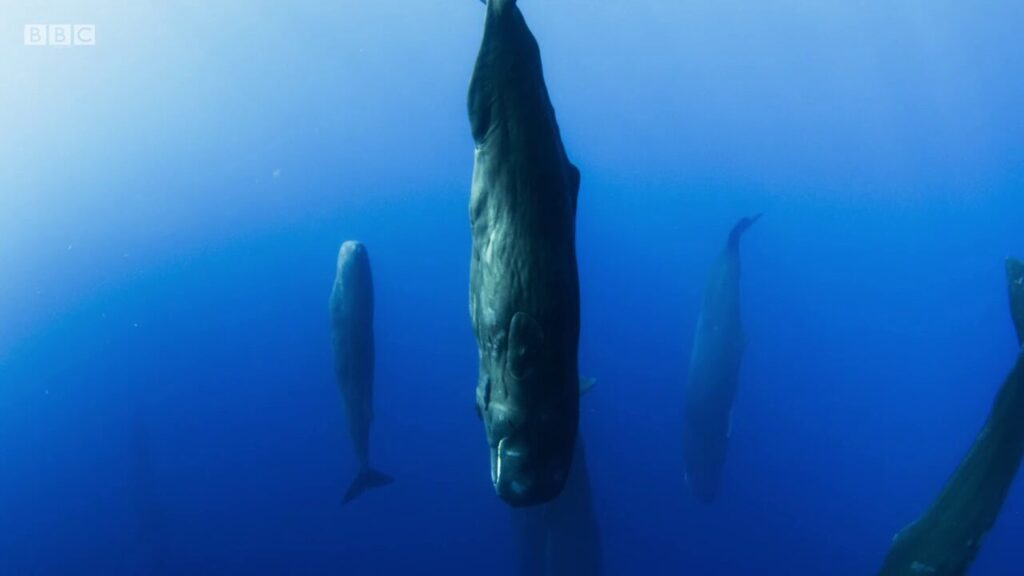
Dire consequences of plastic
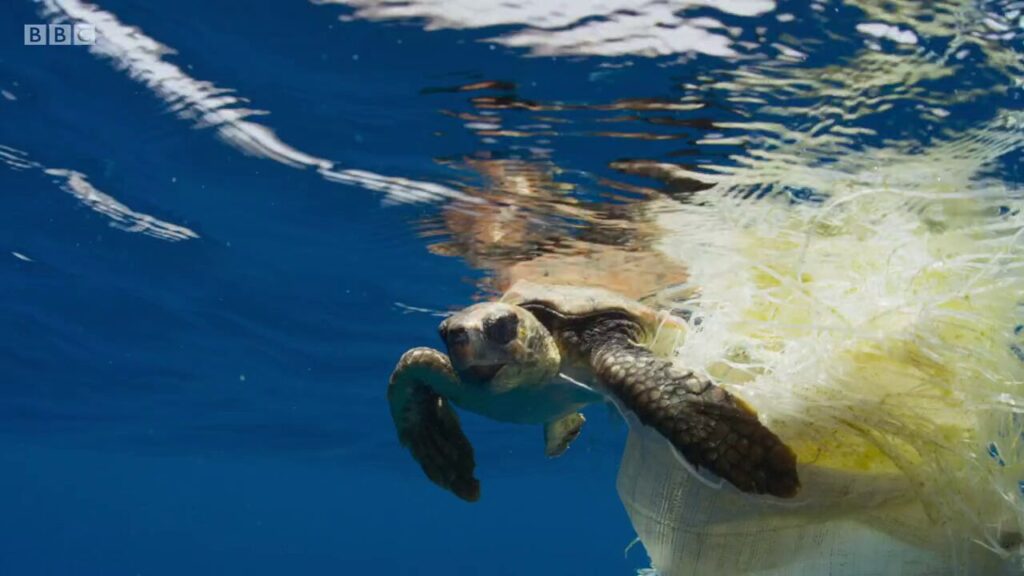
Mother and calf connection
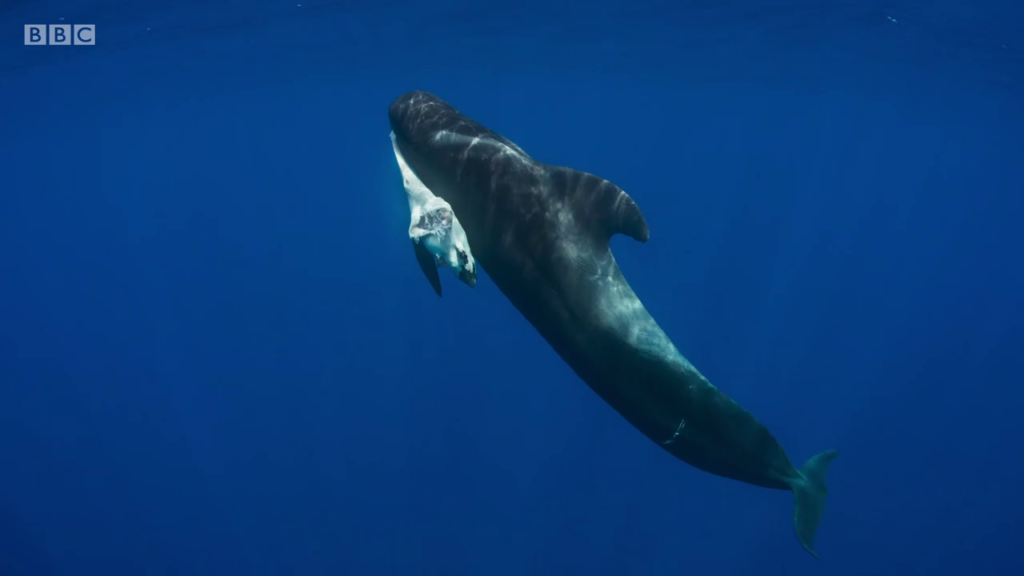
Industrial chemicals could have built up in the system. It could also be due to plastic pollution or her own contaminated milk. All of those are caused by humans.
Final words:
“Unless the flow of plastics and industrial pollution into the world’s oceans is reduced, marine life will be poisoned by them for many centuries to come. The creatures that live in the big blue are perhaps more remote than any animals on the planet. But not remote enough, it seems, to escape the effects of what we are doing to their world.”